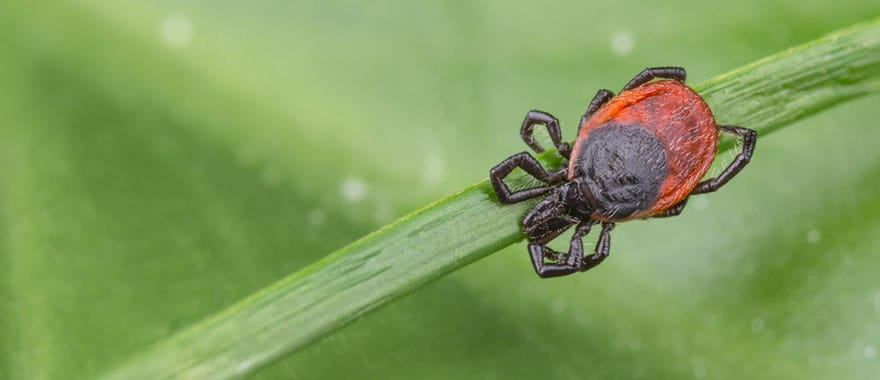 If your hemlock trees seem to be dying and/or are covered with a strange, white fuzzy substance, it’s probably due to an infestation by Hemlock Woolly Adelgid (HWA).
If your hemlock trees seem to be dying and/or are covered with a strange, white fuzzy substance, it’s probably due to an infestation by Hemlock Woolly Adelgid (HWA).
The Hemlock Woolly Adelgid (Adelges tsugae Annand) is a destructive fluid-feeding insect pest that feeds on eastern North American hemlocks (Tsuga canadensis and T. caroliniana). It is native to Japan, and was accidentally introduced to this continent earlier this century.
HWA first appeared in Connecticut in 1985, probably as a result of dispersal by hurricane Gloria from Long Island, where infestations had existed several years previously. HWA is dispersed by wind, birds, deer, and humans, and is moving north at a rate of about 30 kilometers per year. The most obvious sign of infestation is the presence of white woolly egg sacs on the underside of hemlock needles, especially on new growth.
Lifecycle of the Hemlock Woolly Adelgid
Hemlock woolly adelgid has two generations per year in Connecticut. All populations are made up of females that reproduce asexually. In early spring, overwintering females lay between 100 and 300 eggs in the woolly egg sacs beneath the branches. Mobile larvae, known as crawlers, emerge from the eggs in April or May to search for suitable feeding sites. Wind, birds and mammals often spread crawlers to nearby hemlocks.
Once settled at the base of hemlock needles, crawlers become immobile nymphs which feed and mature into wingless or winged adult females by early summer.  The winged form will die after searching for a suitable spruce tree that is not found in North America. The wingless form lays another 100 to 300 eggs on hemlock. Crawlers emerge from these eggs to search for suitable feeding sites.
The winged form will die after searching for a suitable spruce tree that is not found in North America. The wingless form lays another 100 to 300 eggs on hemlock. Crawlers emerge from these eggs to search for suitable feeding sites.
Once settled, the hemlock woolly adelgid becomes dormant until October or November, when it resumes development. Feeding continues throughout the winter and early spring by piercing at the base of the needles. Shortly after infestation, this feeding has the effect of desiccating the needles and causing them to die and fall to the ground.
Infested trees usually die within 9 years, and have been killed in as little as 4 years. In areas such as southern Connecticut which have been infested for several years, massive hemlock die-offs are occurring.
In contrast, it appears that in Japan hemlocks are protected by the presence of abundant and efficient natural enemies to HWA. Current research on HWA is focusing on the identification of a natural predator which will remain viable and effective at regulating HWA populations if introduced to the northeastern United States. The results of this research are promising. In small introductions of Pseudoscymnus tsugae, a coccinellid beetle, to infested Connecticut hemlock stands, the beetle appears to be successful at greatly reducing HWA numbers. The next test for P. tsugae will be to determine whether or not it can maintain its population and keep pace with HWA’s migrations northward at sufficient densities to regulate HWA populations.
How to Recognize Hemlock Woolly Adelgid
- White woolly egg sacs on the underside of hemlock needles
- Thinning of needles (less dense)
- Grayish-green appearance (hemlocks naturally have a shiny, dark green color)
How to Control Hemlock Woolly Adelgid
Horticultural oil (2 % or lower) or insecticidal soap sprays can be applied at anytime but preferably in spring, to suffocate HWA on accessible trees but applications are costly and impractical for large scale control. Coverage needs to be thorough to be effective and needs to be repeated annually to prevent reintroductions from taking hold. These least toxic options are preferable to other pesticides as there are minimal impacts on beneficial or non-target organisms. Chemical control is also limited in its use in the forest setting, although newer chemicals such as imidacloprid (Bayer Corporation) are increasingly used for systemic treatments by arborists to control HWA. Soil drench imidacloprid applications are now available for homeowner use.
However, the chief hope for long term HWA management remains biological control using introduced specialist predators from Japan , China and British Columbia, Canada. The only mass-reared predator from Japan currently available for implementation in infested eastern states is Pseudoscymnus tsugae (Coleoptera:Coccinellidae), a tiny black ladybeetle, about 2mm in length, of the Tribe Scymnini from Japan. Over eight years of careful research at the Connecticut Agricultural Experiment Station, largely supported by the USDA Forest Service, has documented its life history, biology and potential as a biological control agent, including experimental field releases and short-term impact on HWA in Connecticut and Virginia. Field release sites are still being monitored and assessed three to five years after release. The predator is considered established in Connecticut where overwintering adults have been recorded yearly since its first release in 1995 and reproduction has been documented in the field. To date, nearly a million P. tsugae have been released in over 100 sites in 15 eastern states from Georgia to Maine and this species has also been recovered from release sites in other states. Other related ladybeetle predators from China (various Scymnus species), and a derodontid beetle, Laricobius nigrinus , from British Columbia, are under investigation as additional biological control agents at the USDA Forest Service, Hamden, Connecticut, and at Virginia Polytechnic and State University, respectively. Yet another avenue being explored is that of entomopathogenic fungi for biological control of HWA at the University of Vermont.



